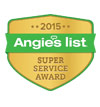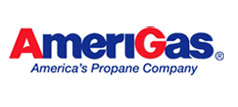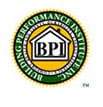Keep your family safe this summer by following these tips from the American Academy of Pediatrics (AAP) and your friends at ServiceMark Heating, Cooling & Plumbing. This is the final installment of a special summer series we have been sharing, and we hope you’ve found these important reminders to be helpful when enjoying summer. This week’s blog focuses on three outdoor themes – Bicycle Safety, Skating/Rolling Safety, and ATV Safety:
BICYCLE SAFETY
- A helmet protects your child from serious
 injury, and should always be worn. Wearing a helmet at all times helps children develop the helmet habit.
injury, and should always be worn. Wearing a helmet at all times helps children develop the helmet habit. - Your child needs to wear a helmet on every bike ride, no matter how short or how close to home. Many injuries happen in driveways, on sidewalks, and on bike paths, not just on streets. Children learn best by observing you. Set the example: Whenever you ride, put on your helmet.
- When purchasing a helmet, look for a label or sticker that says the helmet meets the CPSC Safety Standard.
- A helmet should be worn so that it is level on the head and covers the forehead, not tipped forward or backwards. The strap should be securely fastened with about 2 fingers able to fit between chin and strap. The helmet should be snug on the head, but not overly tight. Skin should move with the helmet when moved side to side. If needed, the helmet’s sizing pads can help improve the fit.
- Do not push your child to ride a 2-wheeled bike without training wheels until he or she is ready. Consider the child’s coordination and desire to learn to ride. Stick with coaster (foot) brakes until your child is older and experienced enough for hand brakes. Consider a balance bike with no pedals for young children to learn riding skills.
- Take your child with you when you shop for the bike, so that he or she can try it out. The value of a properly fitted bike outweights the value of surprising your child with a new one. Buy a bike that is the right size now, not one your child has to grow into. Oversized bikes are especially dangerous for young riders.
SKATEBOARD, SCOOTER, AND IN-LINE SKATING SAFETY
- All skateboarders and scooter-riders should

wear protective gear. Helmets are particularly important for preventing and minimizing head injuries. Riders should wear helmets that meet ASTM (or other approved) safety standards, and that are specifically designed to reduce the effects of skating hazards. - Communities should continue to develop skateboard parks, which are more likely to be monitored for safety than ramps and jumps constructed by children at home.
- While in-line skating (or using Heelys!), only skate on designated paths or rinks, and not in the street.
- Most injuries occur due to falls. Inexperienced riders should only ride as fast as they can comfortably slow down, and they should practice falling on grass or other soft surfaces. Before riding, skateboarders should survey the riding terrain for obstacles such as potholes, rocks, or any debris. Protective pads for wrist, elbow and knees should be worn.
- Children should never ride skateboards or scooters in or near moving traffic.
- Riders should never skate alone. Children under the age of eight should be closely supervised at all times.
ALL-TERRAIN VEHICLE SAFETY
- Children who are too young to have a driver’s
 license should not be allowed to operate or ride off-road vehicles. Children are involved in about 30 percent of all ATV-related deaths and emergency room-treated injuries.
license should not be allowed to operate or ride off-road vehicles. Children are involved in about 30 percent of all ATV-related deaths and emergency room-treated injuries. - Because their nervous systems and judgment have not fully developed, off-road vehicles are particularly dangerous for children younger than 16 years.
- Don’t ride double. Passengers are frequently injured when riding ATVs. Most ATVs are designed to carry only one person: the driver. Passengers can make ATVs unstable and difficult to control.
- All ATV riders should take a hands-on safety training course.
- All riders should wear helmets, eye protection, sturdy shoes (no flip-flops), and protective, reflective clothing. Appropriate helmets are those designed for motorcycle (not bicycle) use, and should include safety visors/face shields for eye protection. Wearing a helmet may prevent or reduce the severity of these injuries.
- ATVs lack the common safety equipment found on all cars and trucks that are designed for street use. ATV tires are not designed to grip on pavement, so operators should not ride on paved roads. Parents should never permit nighttime riding or street use of off-road vehicles.
- Flags, reflectors and lights should be used to make vehicles more visible.
- Drivers of recreational vehicles should not drive while under the influence of alcohol, drugs or even some medicines. Parents should set an example for their children in this regard.
- Young drivers should be discouraged from on-road riding of any 2-wheeled motorized cycle, even when they are able to be licensed to do so, because they are inherently more dangerous than passenger cars.
Now you know how to enjoy summer with good safety habits in mind. No matter what you do outside this summer, keep your cool reliably when inside! If you experience problems with your home’s air conditioning system, contact ServiceMark Heating, Cooling and Plumbing at 1-800-474-5200 or visit www.servicemarksolutions.com. Be sure to watch for more comfort-based blog tips coming soon!
Source: https://www.aap.org/en-us/about-the-aap/aap-press-room/news-features-and-safety-tips/pages/Summer-Safety-Tips.aspx










 Company
© 2016 ServiceMark • All rights reserved HIC #PA100114
Company
© 2016 ServiceMark • All rights reserved HIC #PA100114 